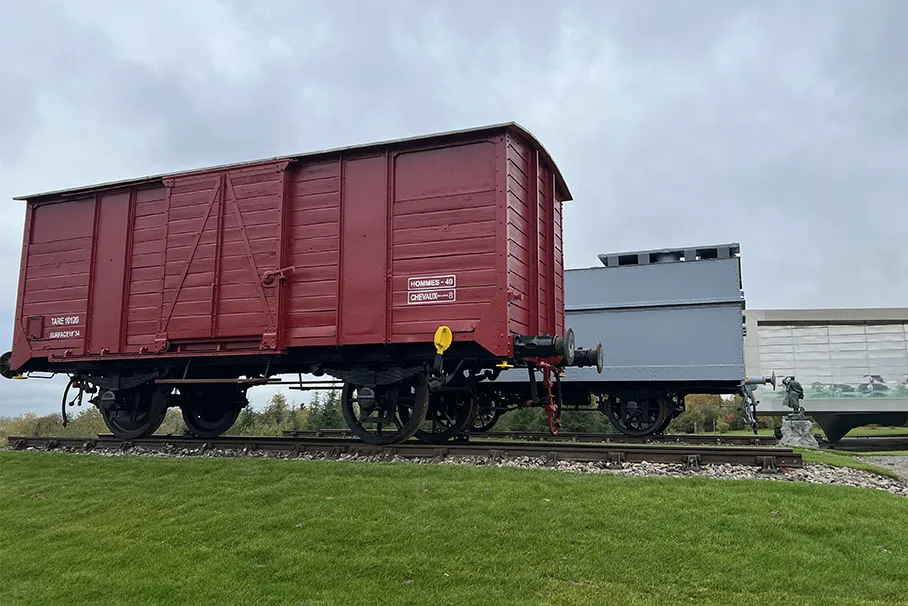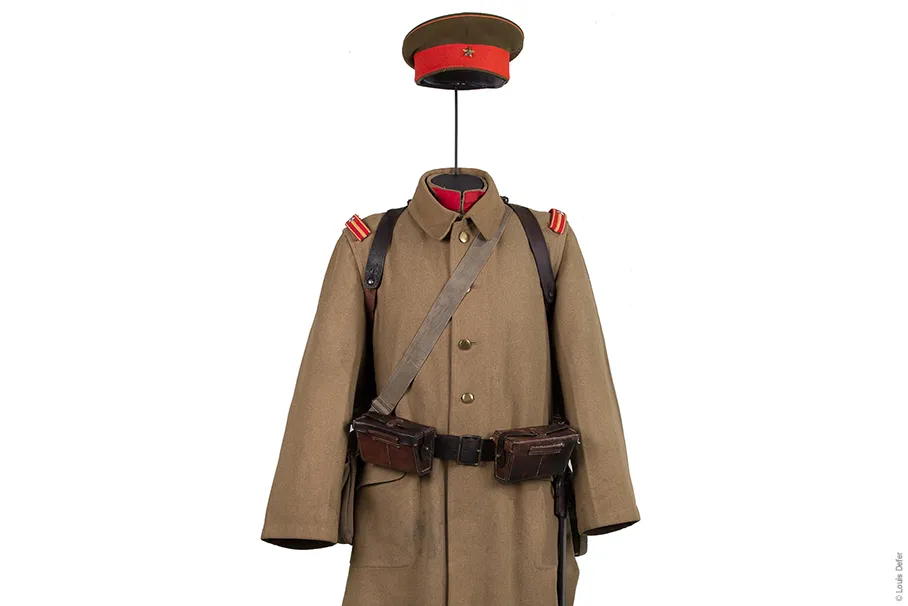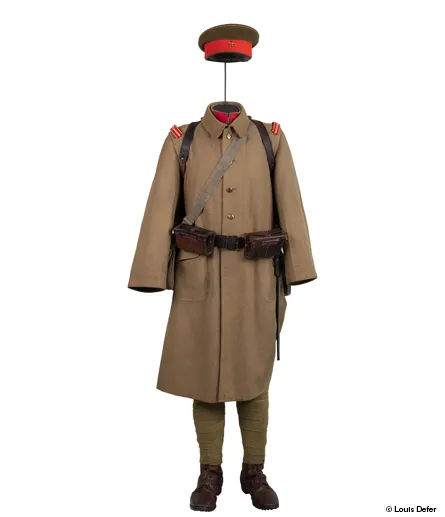
Wagons of the World War

Following the Russia-Japan war of 1904-1905, the Japanese army was reorganized and its equipment modernized. Japanese soldiers definitively adopted European-style uniform and equipment which, when it joined the war against Germany on 23 August 1914, was khaki-coloured.
The M.45 uniform, worn from 1913, was made up of a pea jacket with five matte buttons, a straight collar with crests ending in a “swallow’s tail”, and khaki cloth trousers. Soldiers also wore a service cap with a coloured band and red piping, with a copper five-point star.
The different army corps were distinguished by the colours worn on the collar: in this example, red for infantry. Rank insignia were worn on the shoulders, on patches positioned, unlike other armies, from front to back. Japanese infantrymen also carried an “Arisaka” rifle, a bayonet and a belt with three cartridge pouches. Their equipment was practical and comprehensive, and did not fall short of that of their European counterparts.
